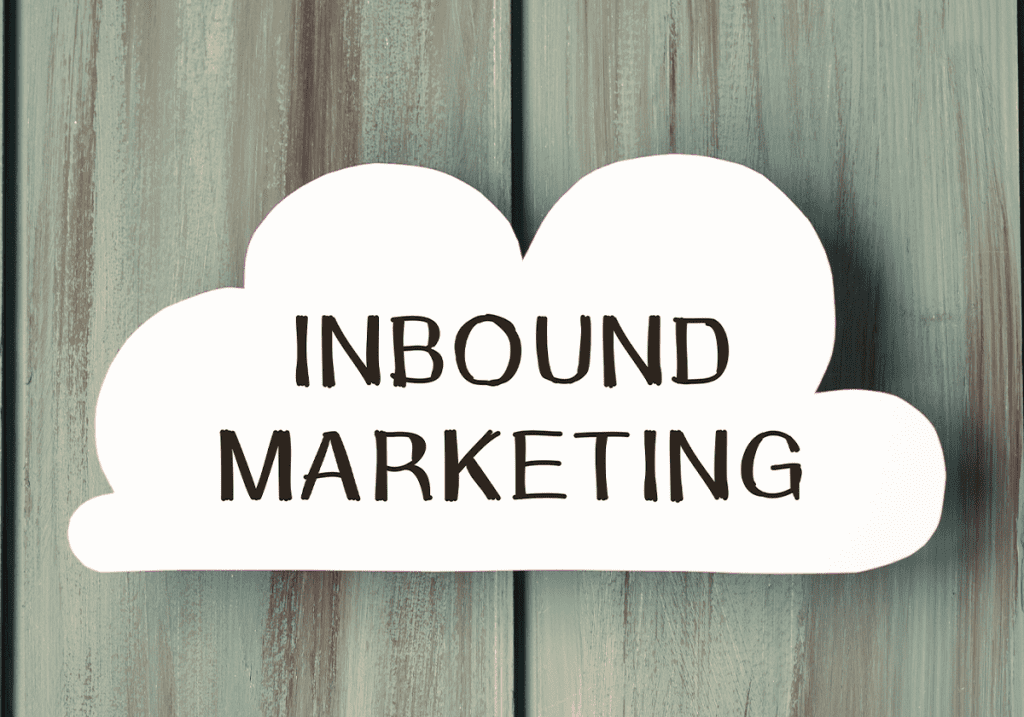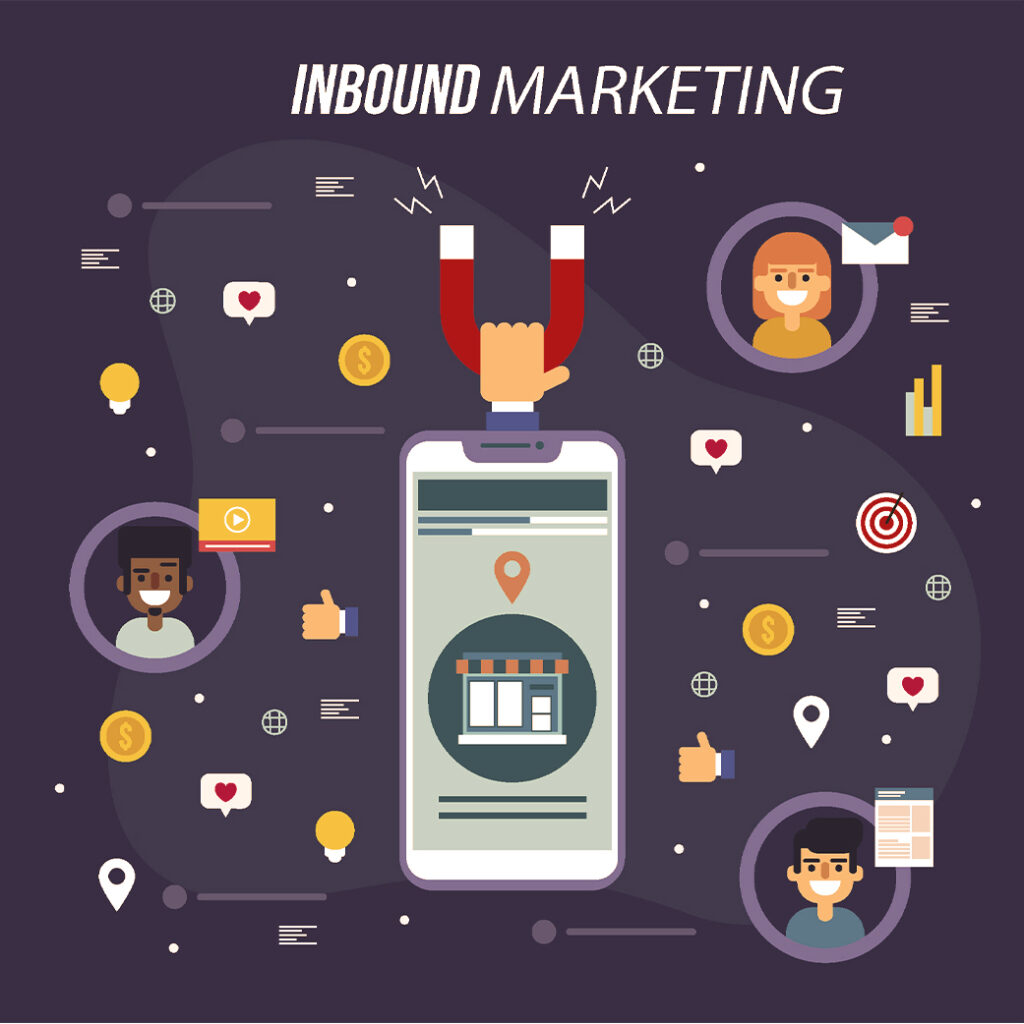
When discussing online presence, it is crucial to note that it is not solely about existing in the memory of existing clients, but rather about being discovered in the digital marketplace.
Hence emerges the notion of Inbound Marketing, which encompasses the utilization of diverse attraction strategies through pertinent content.
Within this kind of approach, a variety of marketing channels are explored – including search engine optimization, blogs, and social media platforms.
Now, the question at hand is this – with a fully operational website, how does one reach the customer and secure the desired sale?
You might be contemplating that now is the time to pursue the customer and demonstrate the exceptional quality of the product. However, inbound marketing takes a different approach – it is not about actively chasing the customer, but rather, it involves them coming to you.
And how does this occur? Through the implementation of techniques and tools that pave the way for the customer to find you.
In this article, we will illustrate the specific techniques you should employ to achieve effective inbound marketing.
Inbound marketing: what is it?
During recent times, the proximity between the real and the virtual has become much closer, making it nearly impractical to live without digital technology.
Hence, it is imperative for brands to adopt the principles of Inbound Marketing as a methodology.
This form of marketing can be applicable to any industry, leveraging engaging and informative content to fortify brand identity. But where does the journey of inbound marketing commence?
The origins of this concept can be traced back to 2009 in the United States, when Brian Halligan published his book titled “Inbound Marketing: Attract Customers Using Google, Social Media, and Blogs“.
Since then, numerous companies across various sectors have embraced this strategy to acquire customers and boost sales, strengthening their market presence and credibility.

There are still numerous individuals who are open to this concept, as they perceive it as being complex or requiring a significant investment with no potential return.
However, anyone who holds such a belief is mistaken. Inbound Marketing serves as a valuable asset for individuals embarking on their digital journey, even without substantial investment.
In fact, it serves as a beneficial tool for venturing into the online realm and is straightforward to implement. Here are several guidelines on how inbound marketing operates.
The steps of inbound marketing
1. Use inbound marketing to attract customers
The fundamental approach employed in this case is simple: a website devoid of visitors fails to produce Prospects (potential clientele).
In the absence of Prospects, there are no transactions.
Thus, the initial phase in Inbound marketing involves captivating attention.
This notion is put into practice as an alternative to squandering resources on customer acquisition, instead channeling efforts into fostering a community centered around one’s brand. So, how does one allure these potential clients? By providing meaningful material.
When offering such content, it is essential to incorporate keywords that align with the searches conducted within the relevant industry.
2. Use inbound marketing to convert
During this phase, the connection commences, as the leads mentioned earlier have already displayed curiosity in our offerings.
Typically, we address certain areas of distress and in exchange, he provides us with his details like email, contact number, obstacles he is encountering, and objectives.
3. Be related to inbound marketing
Just like in various stages of business offline, within a lead database, we need to take into account the situation of the potential customer: they might not be prepared to make a purchase.
And this is where the creation of content focused on different issues and stages of buying comes into play, also attracting other potential customers.
The stage of building a relationship in Inbound Marketing begins here: by using certain strategies, we can identify the stages in which the leads are, motivating them to progress in their journey, effectively speeding up the purchasing process.
Listed below are some strategies we can utilize:
Marketing Automation: refers to the automation of marketing tasks. It can be implemented on social media platforms, enabling you to:
Schedule your posts on the various networks;
Monitor likes, comments, shares, etc.;
Track the clicks that your posts have generated;
Identify, integrate, and monitor user interactions across multiple platforms.
- Email Marketing: an excellent channel for distributing content and establishing connections. You can utilize emails for:
- Promotions – with the goal of promoting a product or service;
- Newsletters – containing diverse content, potentially including targeted offers (such as information about content availability on the blog, or content created specifically for the lead). Newsletters can be used to foster a closer relationship, treating the lead in a special manner – they are the only ones receiving this information firsthand. This same information is not accessible through any other communication channel of the company (it may be disclosed later, but the lead receives it before the general public);
- Nurturing sequences – which involve sending a series of messages intended to establish or enhance your relationship with contacts.
All of these lead nurturing techniques aim to expedite the lead’s decision to make a purchase.
4. Take advantage of inbound marketing
In accordance with the principles of Inbound marketing, this signifies the phase of finalizing the transaction, it denotes the instance when a potential customer has been converted into an actual buyer.
However, this progression must be ongoing and it is crucial not to overlook the importance of the customer. The customer should be treated with special consideration, as a representative of the brand. Why is this important?
The rationale behind this approach is to regard the customer as a collaborator, enabling them to bring in additional clientele.
In this context, we can leverage the full potential of social media platforms and utilize call-to-action buttons to stimulate sharing and enhance brand recognition.
Let’s illustrate this with a practical scenario. Suppose you have recently established a nail salon and you wish to expand your customer base. What would be your initial response? Conduct a Google search on strategies to attract more customers.
The search results will present various websites featuring titles such as “Effective Sales Tactics for Attracting More Customers”, “Recommended Marketing Approaches for Expanding Your Customer Base”, “Leveraging Inbound Marketing to Attract More Customers”.
Choose the title that captivates your interest the most, or even several titles, and commence your exploration of knowledge. Save some of the pages in your browser for future reference, or even remember a brand that offered viable solutions to your problem of attracting more customers.
This is where a connection is established between the brand that provided the content and yourself. This connection is integral for the success of the Inbound marketing strategy.

The provided content provides solutions to uncertainties, inquiries, and clarifies the current requirements, leading to increased user engagement and interactions with the webpage.
Gradually, this individual, who was previously unaware of the brand, transforms into a dedicated supporter due to the brand’s ability to address their issues precisely when they need it the most.
This is the approach by which Inbound marketing entices prospective clientele, by offering content that effectively resolves their difficulties. So, what advantages does this marketing strategy offer?
Inbound marketing benefits
- Your business and brand will experience increased visibility,
- It will successfully reach and retain a larger customer base, while reducing costs,
- Your brand will have a significant impact on consumers’ lives,
- Transforming customers into loyal fans,
- You will have the ability to optimize your sales process,
- Your brand will become unforgettable due to the valuable and pertinent content you provide.
Do you understand the potential benefits of inbound marketing for your brand and business?
This cost-effective strategy is accessible to anyone.
By correctly implementing the strategy or strategies, you can create seamless connections between your customers and your brand. This can be achieved through personalized content that addresses the audience’s needs, while also showcasing your brand’s expertise in its products or services. It is crucial to provide practical information that others can easily apply.
Why not start implementing the tips we have discussed in this article to give your brand a significant boost?
To stay updated on the latest developments in digital marketing and receive our latest news, follow us on social media or subscribe to our newsletters.